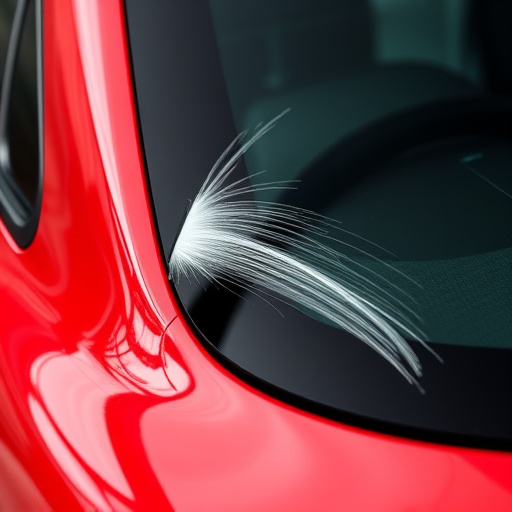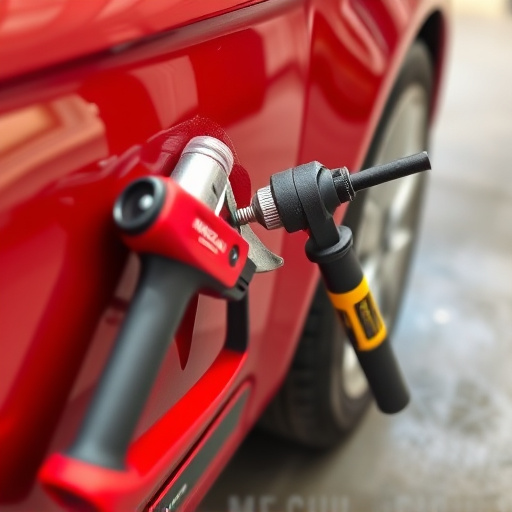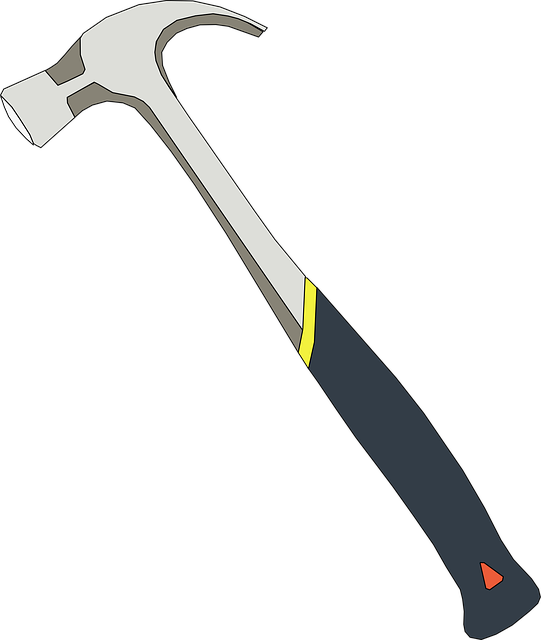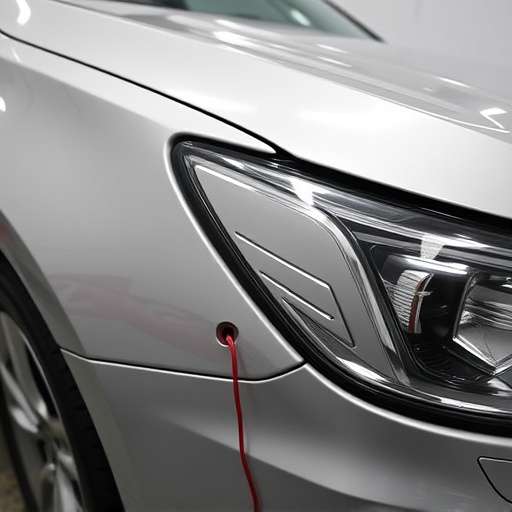Car dent removal varies based on severity. Minor dents can be DIY'd at home but deeper damage may require professional body shop services and panel replacement. Key indicators like size, depth, paint cracks, previous repairs, and metal deformities help assess severity. Measuring depth (2mm+) and angle is crucial for selecting appropriate tools and techniques to avoid compromising structural integrity.
When dealing with a car dent, assessing its severity before removal is crucial for effective repair. This guide breaks down the process into three key steps. First, understand different dent types and their impact on your vehicle. Next, conduct a visual assessment to identify damage indicators. Lastly, measure depth and angle to evaluate severity in complex cases. By following these steps, you’ll ensure proper preparation for safe and efficient car dent removal.
- Understanding Car Dent Types and Their Impact
- Visual Assessment: Identifying Key Damage Indicators
- Measuring Depth and Angle for Severe Case Evaluation
Understanding Car Dent Types and Their Impact

Car dents come in various types, each with its own level of impact and severity. Understanding these different types is crucial before attempting any car dent removal or repair. Dents can range from minor surface indentations to more severe damage that affects the structural integrity of a vehicle. For instance, a shallow dent caused by a light bump might only require simple techniques like a hair dryer and putty for repair, making it an easy fix at home. On the other hand, deeper dents, especially those resulting from collisions or significant impacts, may necessitate more complex methods such as panel replacement or professional body shop services.
When assessing the severity of a car dent, consider factors like depth, size, and location. Classic car restoration enthusiasts know that certain types of dents can be unique characteristics, adding character to older vehicles. However, for modern cars, severe dents could compromise safety features and structural components, making them more challenging and costly to repair. In such cases, seeking expert advice from a qualified body shop is advisable. Proper dent repair techniques ensure the vehicle’s safety, aesthetics, and resale value are maintained, even after the removal of a significant car dent.
Visual Assessment: Identifying Key Damage Indicators

When assessing the severity of a car dent before removal, the first step is a thorough visual inspection. Look for key damage indicators such as the size and depth of the dent, the presence of any cracks or breaks in the paint, and whether the dent affects structural components like panels or trim. A large, deep dent that extends into the metal or one that covers a significant area of the vehicle’s surface indicates more severe damage, potentially requiring professional car dent removal services from an auto collision center.
Additionally, inspect for signs of previous repairs, like uneven paint finishes or patches, which can hint at deeper issues beneath the surface. If you notice any ripples, bulges, or warping in the metal, it’s a strong indicator that the dent is more complex and may necessitate advanced techniques like laser straightening or specialized tools to ensure accurate car scratch repair or car collision repair. These visual cues will help guide your decision on whether to attempt DIY car dent removal or seek professional assistance.
Measuring Depth and Angle for Severe Case Evaluation

To accurately assess the severity of a car dent for removal, measuring both the depth and angle is crucial. Start by using a ruler or a dent gauge to determine the depth of the depression. A severe dent will typically sink in deeper than 2 millimeters into the panel. The higher the number on your gauge, the more significant the damage.
Next, examine the angle at which the dent has occurred. Severe dents often have a sharp, nearly vertical angle, indicating a sudden impact. This is particularly important for metal compatibility during removal, as misaligned panels can lead to further damage during auto body repairs or fleet repair services. For vehicle collision repair, understanding these dimensions ensures that the right tools and techniques are used, minimizing the risk of additional strain on the car’s structural integrity.
When assessing the severity of a car dent before removal, understanding different dent types, identifying key damage indicators, and measuring depth and angle are crucial steps. By combining these methods, you can accurately evaluate whether a dent is minor or requires professional attention for effective car dent removal. This ensures that you make informed decisions to preserve your vehicle’s appearance and value.














